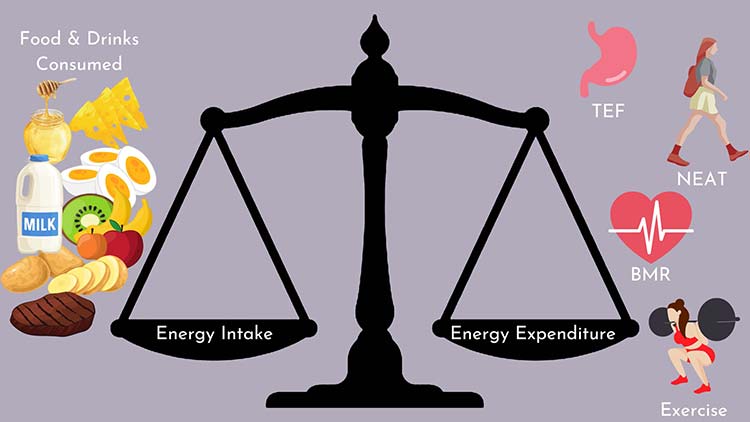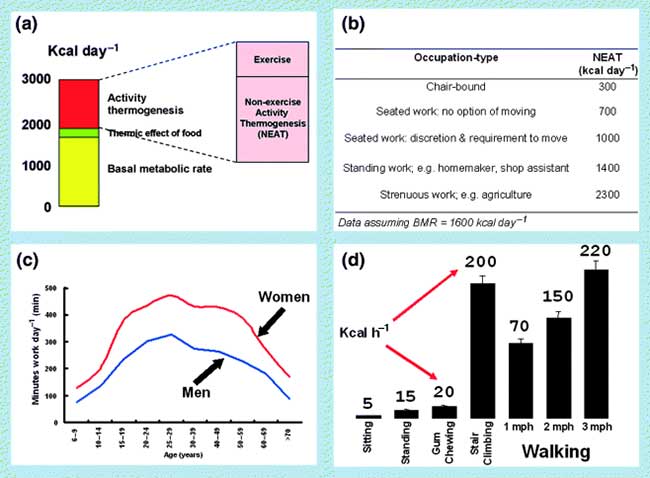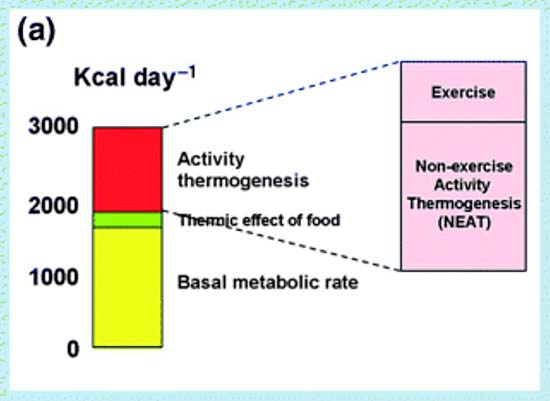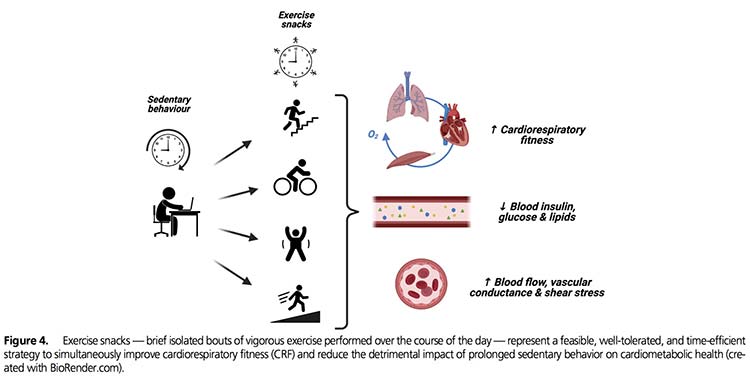- Improve your metabolic rate through lifestyle and dietary changes before starting a weight loss regimen
- Aim to raise your maintenance calorie level before dieting to avoid extreme calorie restriction and ensure long-term sustainability
- Recognize that weight loss requires a caloric deficit, influenced by both calories consumed and calories burned. Focus on enhancing your metabolism through increased physical activity and managing macronutrient intake
- Develop fundamental health habits, such as regular physical activity and home-cooked meals, to make weight loss easier and more effective
- Prepare for a gradual approach to weight loss by adjusting your diet and lifestyle to improve your overall metabolic health first
![]() The question of “how to lose fat?” seems to be a popular question these days. And it is understandable, as many people are overweight and obesity rates continue to rise. But before diving into “how to lose weight,” you should first assess whether you are even at a place where weight loss should be your first goal.
The question of “how to lose fat?” seems to be a popular question these days. And it is understandable, as many people are overweight and obesity rates continue to rise. But before diving into “how to lose weight,” you should first assess whether you are even at a place where weight loss should be your first goal.
If you want to lose weight, you should first work on improving your metabolic rate and improving your habits. Doing so will make weight loss in the future so much easier, more successful and more sustainable. If you can’t master these basic habits, how can you expect to excel during a weight loss phase?
Without mastering these foundations — you will likely need to consume a very small amount of calories to lose weight — which is not sustainable and will negatively impact your metabolism in the long run.
Let’s briefly discuss a hypothetical situation. Let’s say at one moment in time (Point A) maybe you have down regulated your metabolism or have unbalanced hormones so your maintenance caloric intake is around 1600 calories (meaning you maintain your weight consuming this amount of calories).
But then 3-6 months later (Point B) after implementing some lifestyle and nutrition changes (discussed below) your new maintenance is 2300 calories (again, this is hypothetical) — meaning you can maintain your weight now at higher calories. At Point B, you can then diet (enter a fat loss phase) at a higher calorie intake relative to Point A.
By working on improving how your body works as a whole (improving your metabolism and thyroid system), we can increase your energy expenditure.
Thus, when it’s time to lose weight, you can diet at a higher caloric load (making the whole weight loss phase more enjoyable and sustainable). Who wants to eat 1000 calories to lose weight? This is not healthy and is not necessary.
You do, however, need to meet your body where its at and work slowly from point A to point B to improve your metabolism. How do we do that? Let’s dive in.
Following the Law of Thermodynamics (energy cannot be created or destroyed) — you must be in a caloric deficit to lose weight. Yes, there is of course nuance as there are MANY factors that impact the “Calories Out” side of the equation, but we must create an energy deficit which depends on a number of variables.
Your energy intake (calories consumed) equates to all of the calories you consume from food and liquids. Your energy expenditure (the calories you “burn”) is the sum of:
1. Your basal metabolic rate (BMR), which refers to the energy required for your body to maintain basic function. This includes breathing, digesting food, pumping blood throughout the body, maintaining strong hair and nails, the generation of energy, etc.
This accounts for 65% – 70% of your total daily expenditure — making it the largest contribution to the energy expenditure equation. Increasing your metabolic rate is one of the best ways to make weight loss and maintenance more sustainable in the long run. You can increase your BMR and this is advantageous for weight loss!
2. Nonexercise Activity Thermogenesis — NEAT (body movements outside of planned exercise, like fidgeting, doing laundry, etc.). Calories burned from NEAT will vary A LOT. More active individuals (higher daily step counts) will burn more calories due to higher levels of NEAT. Dr. Levine has shown that NEAT can vary by up to 2000 calories per day between two individuals of the same size!1
3. Exercise, the energy your body uses for planned physical activity, whether that is strength training, playing sports or a cardio session. You actually don’t burn many calories during a strength training session — and the goal isn’t to burn calories. The goal is to elicit a muscular adaptation to then increase the amount of lean mass (muscle) you have, and thus increase your metabolism.

4. Thermic Effect of Food (TEF) — The amount of calories your body uses to digest the food you consume.
The balance between your energy intake and energy expenditure overtime will determine whether you maintain, lose or gain weight.
The more we can increase our metabolism and energy expenditure, the more food you can eat and maintain your weight AND the more food you can eat during a weight loss phase. So step one is focusing on improving the right side of the scale before decreasing the left side.
The image below2 demonstrates the relative contribution of the above 4 items on your total energy expenditure:

As you can see, your NEAT and BMR are the largest contributors to your energy expenditure. Thus, these should be the two things we try to improve before entering a weight loss phase. And there will be many people who criticize “calories in vs. calories out” — and I understand — of course it isn’t perfect!

Here is a criticism of “calories in vs. calories out” from a Professor from Stanford:
“This idea of ‘a calorie in and a calorie out’ when it comes to weight loss is not only antiquated, it‘s just wrong,” says Dr. Fatima Cody Stanford, an obesity specialist and assistant professor of medicine and pediatrics at Harvard Medical School.
“The truth is that even careful calorie calculations don‘t always yield uniform results. How your body burns calories depends on a number of factors, including the type of food you eat, your body‘s metabolism, and even the type of organisms living in your gut. You can eat the exact same number of calories as someone else, yet have very different outcomes when it comes to your weight.”
I agree with the last two sentences! Of course there is nuance. But that does not mean that the energy balance still doesn’t apply. It means that your energy expenditure is severely hindered by a poor metabolism and unbalanced hormones.
With all of the food you eat — something has to happen to that food, it doesn’t just “poof” go away. So consuming extra energy (calories) than your current energetic demands will be stored as fat for future use.
Thyroid hormones are the master regulator of body metabolism. With a sluggish thyroid system, your BMR will be low. Meaning, your body doesn’t burn many calories.
So, in order to lose weight, you would need to consume a very low calorie diet — which is unsustainable. Meaning, your current state of your metabolism is not setting you up for success to lose weight. How do we increase our BMR (basal metabolic rate)? (Another way of asking this question is — how do we improve our metabolism?)
The 7 habits listed below will help you accomplish this (and you should master these habits FIRST before a fat loss phase).
1. Stop seeking quick fixes — Cutting carbs can lead to quick weight loss for some people — but this is largely a loss of water weight (and for some, a loss of muscle mass — which is NOT what we want).
HUNDREDS of people have come to our course saying “keto initially worked for me to lose weight, but now I have regained it plus some.” Their hormones and metabolisms crashed, and the restrictive approach lead to a never ending binge cycle where progress is made, lost, made, lost, etc. That isn’t healthy!
Cutting carbs does not automatically = weight loss. For some people, restricting an entire macronutrient will help them lower their caloric intake, which can lead to temporary weight loss.
But you don’t have to cut carbs to lose weight. That is simply not true — increasing fat oxidation does not increase weight loss.3 You can still burn fat when including carbohydrates in your diet.
2. Eat breakfast — No, fasting is not the magical tool either. If it helps you cut calories for a period of time, that is likely what led to initial success. But fasting is a sign to the body that it needs to preserve. A body will NOT increase metabolism when it senses scarcity. So, eat breakfast!
Those who eat a big breakfast burn twice as many calories (have an improved BMR) relative to those who don’t eat breakfast or eat a small breakfast and eat a large dinner.4 Your diet induced thermogenesis is 2.5x higher in the morning relative to the evening.
Those who eat breakfast also experience fewer cravings and have healthier blood glucose and insulin patterns.5 You just fasted for 8-10 hours — eat your breakfast.
3. Cook most of your meals — Your food choices (the source of calories) will also impact how your body produces energy and your hormones (thus impacting your BMR).
The whole point of a “pro metabolic” nutrition strategy is to improve how your body generates energy and maintain balanced hormones. When you become aware of better food choices, you can work towards maximizing your BMR.
Processed food and most take out/restaurant food are often very energy dense (they are high carb and high fat), PUFA rich, and micronutrient poor. You will truly not make significant progress long term if you do not start cooking most of your meals (eating out a few times a week is fine!)
Most processed food are also filled with preservatives, gums, dyes and fillers — all of which can negatively impact your gut health overtime, which will hinder energy production and metabolism.
4. Consume adequate dietary calcium — It has been demonstrated that each 300 mg increment in regular calcium intake is associated with approximately 1 kg less body fat in children and 2.5–3.0 kg lower body weight in adults.6
A higher calcium diet was also shown to be more effective in reducing abdominal fat in subjects with Type 2 diabetes relative to a lower calcium diet.7 Calcium may influence body fat levels due to its effect on BMR8 due to the enhancement of thermogenesis and reduction in fat synthesis.9
So, make sure you are regularly eating milk, cheese, yogurt, or well cooked dark leafy greens for the metabolic enhancements of dietary calcium.
5. Frequent walks and movement throughout the day — High activity levels play a major role in having a healthy metabolic response — we respond to strength training better and we improve how our body responds to the food we eat by lowering blood lipids and improving our insulin response.
Individuals who participate in habitual physical activity can maintain lower body fat and a higher BMR than sedentary controls with similar body mass, FFM, and body mass index.10
There are so many studies in the literature documenting that frequent movement throughout the day is vital for a healthy metabolism. In fact, some studies are now showing that we do not get the health benefits of a workout unless we are active throughout the day, not just in the workout.
Meaning, if you workout for 30 min – 1 hour a day, and then sit the rest of the day — you actually aren’t getting the health benefits (such as improved fuel utilization) of that workout! You could just be wasting your time.
2-4 strength workouts a week plus daily regular movement throughout the day through light walks (rather than just 1 workout then sitting the rest of the day) is the best way to maximize health improvements and fat loss from exercise. This is commonly referred to as “Exercise Snacks” in the literature, and is illustrated in the image below:11

“Prolonged sitting prevents a 1-h bout of running from improving fat oxidation and reducing plasma triglycerides. This ‘exercise resistance’ can be prevented by taking 8500 steps·d−1 or by interrupting 8 h of sitting with hourly cycle sprints.”12
“Two benefits of acute exercise are the next day’s lowering of the postprandial plasma triglyceride response to a high-fat meal and increased fat oxidation. However, if activity levels (daily steps) are very low, these acute adaptations to exercise do not occur.
This phenomenon has been termed ‘exercise resistance.’ When participants took 5000 or fewer daily steps and despite performing a 1-h bout of exercise, they displayed a 16% – 19% decrease in fat oxidation and a 22% – 23% increase in postprandial plasma TG excursions the next day compared with NORMAL (approximately 8500 steps per day; P < 0.05).
Therefore, it could be recommended that for optimal fat metabolism, people do not reduce their step count below approximately 8500 steps per day, even if they are additionally exercising at a moderate intensity.”13
“These data indicate that physical inactivity (e.g., sitting ~13.5 h/day and <4,000 steps/day) creates a condition whereby people become ‘resistant’ to the metabolic improvements that are typically derived from an acute bout of aerobic exercise (i.e., exercise resistance). In people who are physically inactive and sitting for a majority of the day, a 1-h bout of vigorous exercise failed to improve lipid, glucose, and insulin metabolism measured the next day.“14
There are so many other studies documenting the benefits of just being active throughout the day. I am NOT saying you should be running or exercising all day long — but try to walk more! It is a low stress movement that yields drastic health benefits. Shoot for 8,000 steps per day.
How to implement regular movement into your lifestyle: either plan walks into your schedule, or where a step tracker and shoot for minimum 8k steps a day (10k-12k would be a great goal to move towards!)
One habit change that can make this shift easier (without setting reminders on your calendar) is to make it a priority to take a light walk after each meal and snack! This will also improve digestion of that meal.
6. Strength train and build muscle — It is now well documented that having more muscle mass increases our BMR — meaning our body burns more calories at rest (increasing our energy expenditure) because muscle is “expensive” tissue and uses a lot of energy!
Studies have shown that increased muscle mass increases skeletal muscle glucose uptake and improves insulin sensitivity.15
The best way to build muscle is to implement smart strength training! (And if you need help with a strength training program — check out our Train2Change app for metabolism-supportive, muscle-building workouts).
7. Track your food and learn about macronutrients — Many people will say this is restrictive and an “eating disorder.” But if you didn’t track your food before, why are you now at a place where you want to lose weight? Was your previous approach working for you? What is the downside in temporarily tracking your food to get a better understanding of properly fueling your body with the right macronutrient balance?
If we compare our caloric intake to our finances — isn’t it a good idea to keep a budget? So that you can make better decisions about future expenses?
There is also a general trend that once you start tracking, you make better food choices. “When you observe something, you change behavior.” Who wants to track eating a Twinkie and candy bar?
Gaining an understanding of where your body is at currently will help you make the best food decisions to avoid a massive overshoot and simultaneous weight gain.
This involves tracking your food intake (the amount of carbs, fats and protein you consume each day) and determining your “maintenance calories” — the amount of calories you can eat while maintaining your weight.
Tracking your macros will also allow you to better understand how different macronutrients impact your body temperature (we want our body temperature to go UP, which is a sign of an improved metabolism). It can also help you avoid eating a more high fat and high carb diet, which allows us to easily over consume calories and a high fat intake can negatively impact how we utilize carbohydrates.16,17
Tracking your macros doesn’t have to be a forever thing, but tracking some data can EMPOWER us to make better food choices that are actually moving the needle forward in our health. (Rather than just following arbitrary diet rules, or doing something OVER AND OVER again and expecting different results).
Mastering these 7 habits will help you get your body to work for you, not against you. And when the time is right, healthy fat loss (that is sustainable and lasts — meaning you don’t rebound and regain weight quickly) is not sexy or quick. It takes patience — play the long game!
Focus on mastering the basics of healthy habits (essentially — eat real food and make regular movement a part of your lifestyle), so that your body is better at using the energy (food) you consume.
As a result of an improved metabolism, you will be able to eat more food (slowly over time) and maintain your weight. Which is what we want!
Transform Your Health — One Step at a Time


Ashley and her sister Sarah have put together a truly groundbreaking step-by-step course called “Rooted in Resilience.” They have compiled what clearly is the best application of Dr. Ray Peat’s work on Bioenergetic Medicine that I have ever seen.
It is so good that I am using the core of their program to teach the many Health Coaches that I am in the process of training for the new Mercola Health Clinics I am opening this fall. It took these women working nearly full-time on this project for a year to create it.
This has to be one of the absolute best values for health education I have ever seen. If you want to understand why you struggle with health problems and then have a clear program on how to reverse those challenges, then this is the course for you.
It is precisely the type of program I wish I would have had access to when I got out of medical school. I fumbled around for decades before I reached the conclusion they discuss in the course and share with you so you can restore your cellular energy production and recover your health.
| Select and eat the right foods to heal your metabolism and improve glucose utilization |
| Balance your hormones to help reduce anxiety, weight gain and sleep disturbances |
| Use reverse dieting to increase your calories without gaining weight and tanking your metabolism, all while improving your energy levels |
| Heal your gut for proper immune function, mood and weight management |
| Tweak your diet and lifestyle habits to improve your mindset and mental health |
| Crush your fitness goals with ease and get your life back on track |
| Master the most essential habits for health with bonus guides, including over 100 meal plans to take the stress out of meal time planning and shopping, and so much more! |
Learn more about Rooted in Resilience here.











